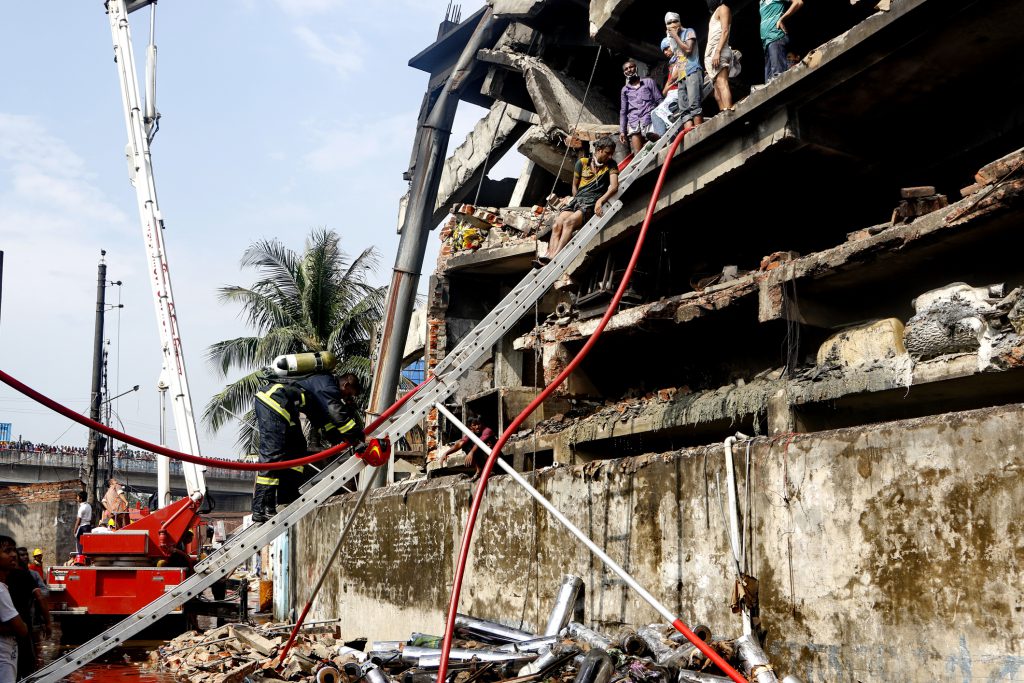
A repeat of the Rana Plaza disaster could be on the horizon.
Alarming labor concerns in the global supply chain have recently come to light, and they absolutely warrant our attention — China’s abusive labor practices are now a major human rights issue.
But as the United States and Bangladesh, the world’s second largest exporter of ready-made garments behind China, enter new trade negotiations, we wanted to take a moment to reflect on another area of the world that’s still in dire need of reform.
First, a quick history lesson:
On April 24, 2013, one of the worst industrial accidents in history, the Rana Plaza disaster, exposed the hazardous working conditions of the garment factories churning out the world’s fast fashion. The collapse of a building that housed five factories in Dhaka, Bangladesh, led to the death of at least 1,132 people and injured more than 2,500.
Yet, only five months after the building collapse, there was still more dramatic loss of life within Bangladesh’s factories. On Nov. 24, 2013, a fire raged within a garment factory, but the factory’s managers barred workers from leaving after fire alarms sounded, resulting in the deaths of at least 112 workers who were trapped inside.
According to the International Labour Organization, since the Rana Plaza collapse, at least 35 additional textile factory incidents have occurred, resulting in the injury of 491 workers and 27 deaths.
Many took notice of these tragedies, and public outrage held Western retailers accountable for hazardous working conditions in Bangladesh’s factories, which apparel brands to mandate more stringent safety standards and implement their own safety inspections.
Two safety deals were ratified in 2013, mandating and funding safety inspections though international monitoring, which did improve working conditions. In 2018, when the term for both deals lapsed, the local government then took the reins in leading the labor reform process in Bangladesh.
So, what’s happening now?
Well, things aren’t looking good for Bangladeshi workers.
As factory oversight in Bangladesh transitions to local Bangladeshi politicians, many of whom own some of the factories they intend to regulate, reports show that safety hazard remediation has slowed to “a 2 percent rate, compared with 6 percent in 2018, 9 percent in 2017 and 22 percent in 2016,” according to The New York Times.
Meanwhile, retailers are demanding lower and lower prices as global competition for rock-bottom wages increases.
Pressure is building for Bangladesh to cast safety and wage gains aside and fully feed the beast of fast fashion once again, but the price will be the lives of millions of workers.
Now the U.S. is moving to expand trade with Bangladesh by increasing market access for U.S. farm goods. As part of these trade talks, the Office of the U.S. Trade Representative is reportedly asking that Bangladesh recommit to improving working conditions. Though Bangladesh has made progress since the Rana Plaza disaster, emerging signs of backsliding show that there’s plenty of work to be done.
Part of the work has to happen right here in America. Our voracious appetite for bargain basement prices has fueled abusive labor practices for years. We see the real human toll of that appetite in the human rights crises in China, as well as Bangladesh.
Think about that every time you shop. When you purchase a Made in America product, you not only support good-paying jobs in your community — you also take a stand against those companies who are still exploiting abusive labor overseas.
